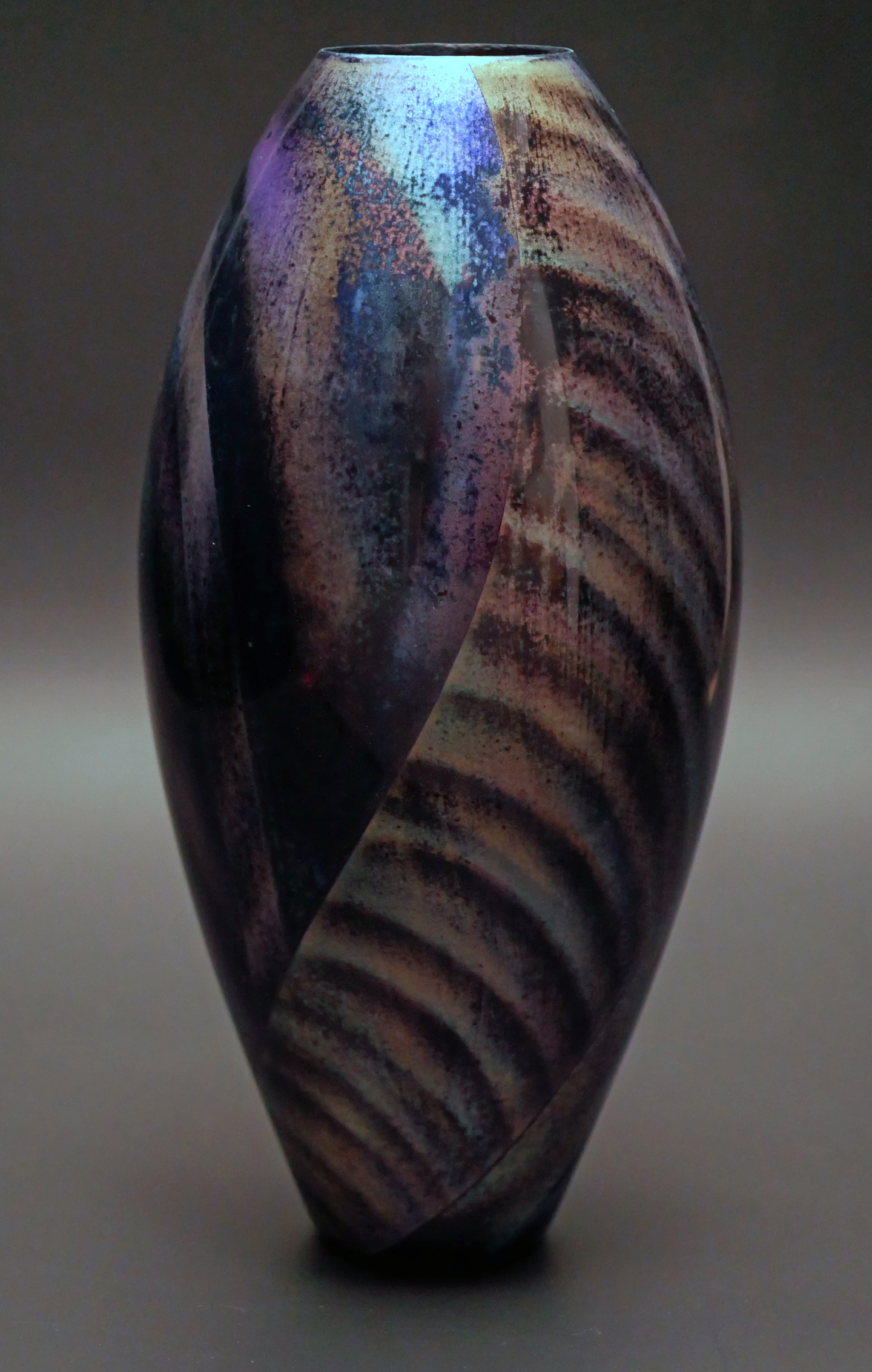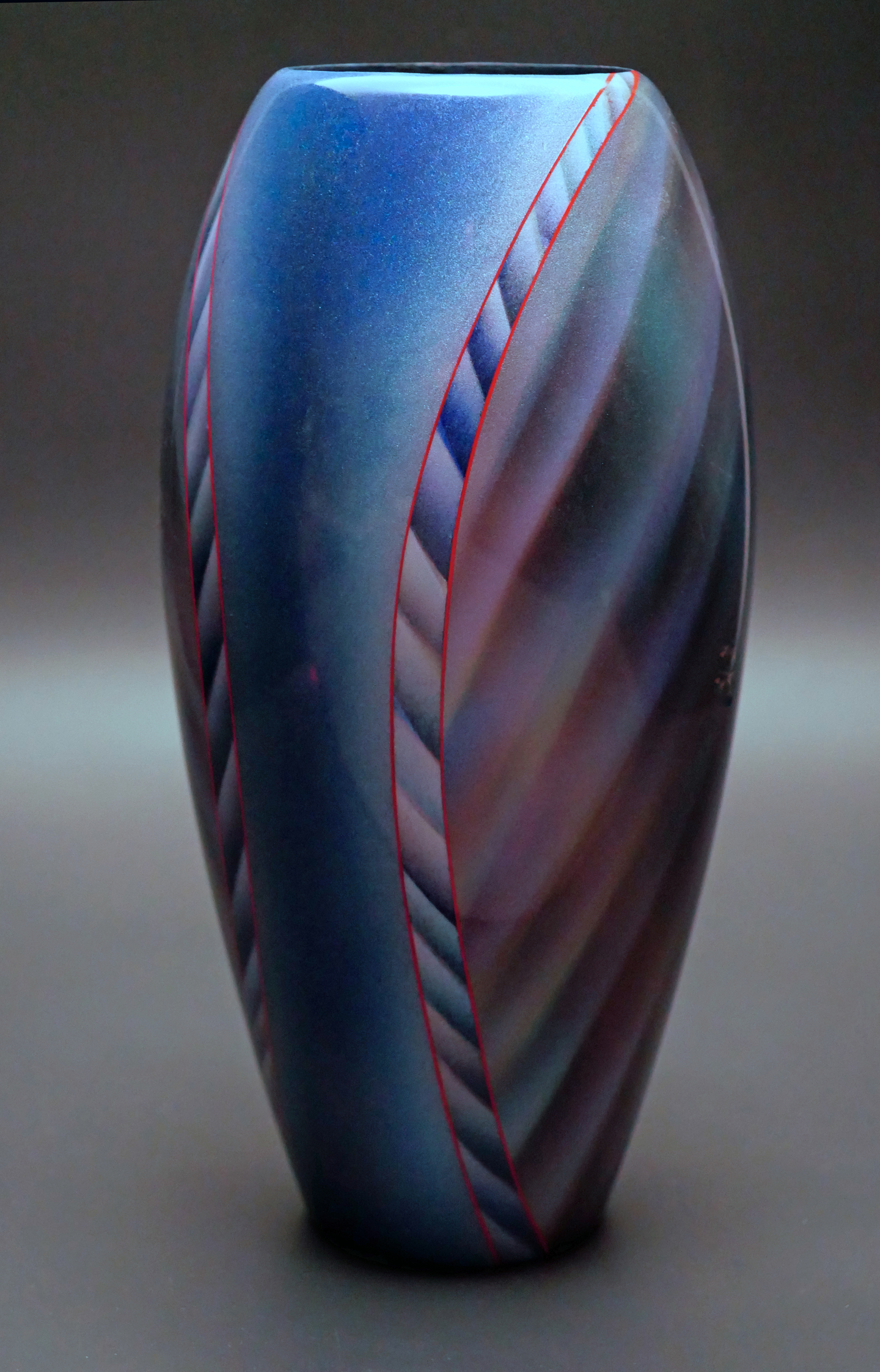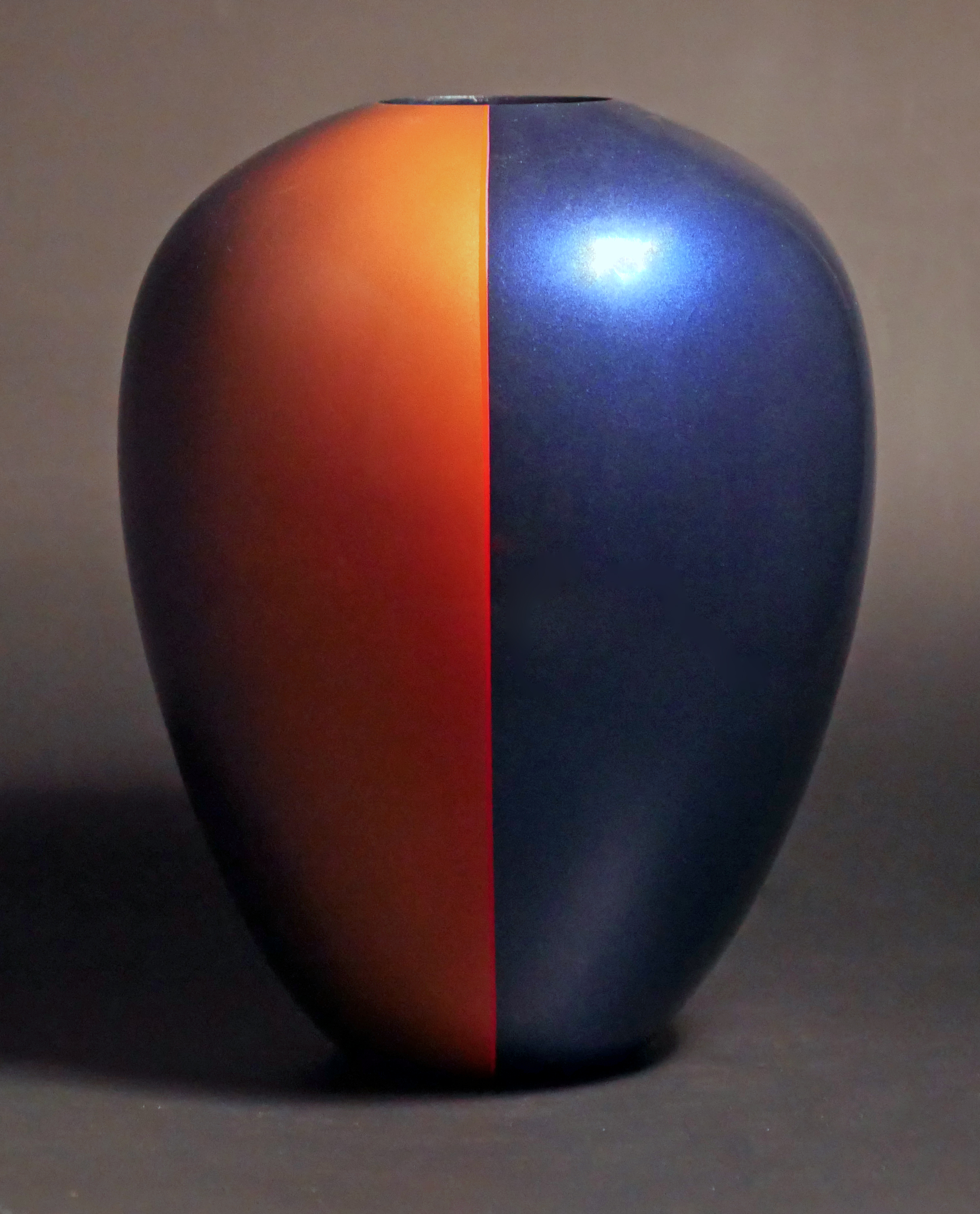Jay has always been an artist. From his earliest memories he has played with clay or drew or painted. Upon entering higher education, he had planned to continue his study of pottery but became enchanted with painting. After finishing his undergraduate degree, he pursued and completed a Master of Fine Arts degree focusing on painting and drawing.
While raising a family he worked in the environmental protection field and contributed to many successful and award-winning waste reduction and recycling programs.
During that time, he continued to produce art work, designed and built houses and became proficient in woodworking and furniture making. One day he made a table top. He thought “this table needs round legs, not squared legs from a table saw. So, he bought a lathe. He turned the legs, and thought “wow, this is fun!” Well, he never finished the table and became been so taken by woodturning he threw himself into learning and producing as much and as fast as the lathe allowed him to turn.
Jay has successfully blended his woodworking and painting skills to create unique polychrome lathe turned and sculpted pieces. These works are inspired by the daily shifting from day to night, the mysteries and imagery of nature, the textures, layers and undulations of the landscape and most particularly images of deep space.
A healthy shop and a healthy environment are important to Jay. In support of that, he seeks out and uses locally grown wood that is considered urban salvage as well as manufacturing rejects that would otherwise be disposed while only occasionally and sparingly using imported woods for accents. He uses water based acrylic paint for color on his pieces. He finishes his work with water-based lacquer. For plain wood finishes he uses a thistle oil-based product.
Jay had been somewhat recluse when it has come to his artwork, generally avoiding competitions and exhibitions. But with the encouragement of friends and family, has reentered that world and has exhibited widely, with his work being published in woodworking and woodturning magazines nationally and internationally.
I’ve always made art. From the time I was a little kid, I was always making something. Creativity is a process. As was my life’s journey with creativity. Creativity morphs. Inspiration, curiosity and creativity go hand in hand. They are all much the same words to me. They describe how I to delve deeply into something. The delving is the process. Pushing the limits, exploring, learning. It is all about learning. The day I quit learning is the day I die.
What influenced my art? Probably everything and everyone and nothing at the same time. The most difficult part of creating is thinking of something to create; thinking about and trying to make it happen. The easiest part of creating is letting it happen, letting the process unfold in the zone. When I am in the zone, time disappears. Things happen. I can dive deeply into the process of creating.
For example, I was introduced to interference paint at the art supply store. Blue. It was the color I was looking for, for the project I was working on. That has led to a many years’ long exploration of interference paint, a deep dive. Interference paint use can get kitschy if you aren’t careful. It is amazing how much you can get out of those paint pigments. I feel like I’ve just scratched the surface. And, as I said, it’s been years now. It’s been a deep dive into applying this pigment on turned wood. Not unlike applying paint to a wood panel, only the panel is curved.
I have a background in painting. Early influences were the gestural painters of abstract expressionism, the ethereal images of American lyrical abstraction, open spaces of minimalism, certainly surrealism, and a good dose of the whimsy created by the funk artists of the late 60s and early 70s. In that group, Mark Rothko, Barnett Newman, Willem de Kooning, Rene Magritte, Paul Klee, William T. Wiley. Also, art history classes, being in studio classes, and group critiques. The environmental movement, good science and survival of the biodiversity of the planet. Spiritual growth, who am I and what’s this all about? Particularly, the spiritual realm. That which is within and that which is the universe, where I am in it and what else could there be when not limited by dogma.
For me, the most important part of visual art is evoking emotion. Art is not something that needs to be talk about, it is to be seen and experienced. I ask the viewer not to listen to the mindless din going on when their mind asks, “what is it?” But rather, I ask the viewer to simply be with the piece, experience it, see it and take a deep dive, feel it with their heart.





